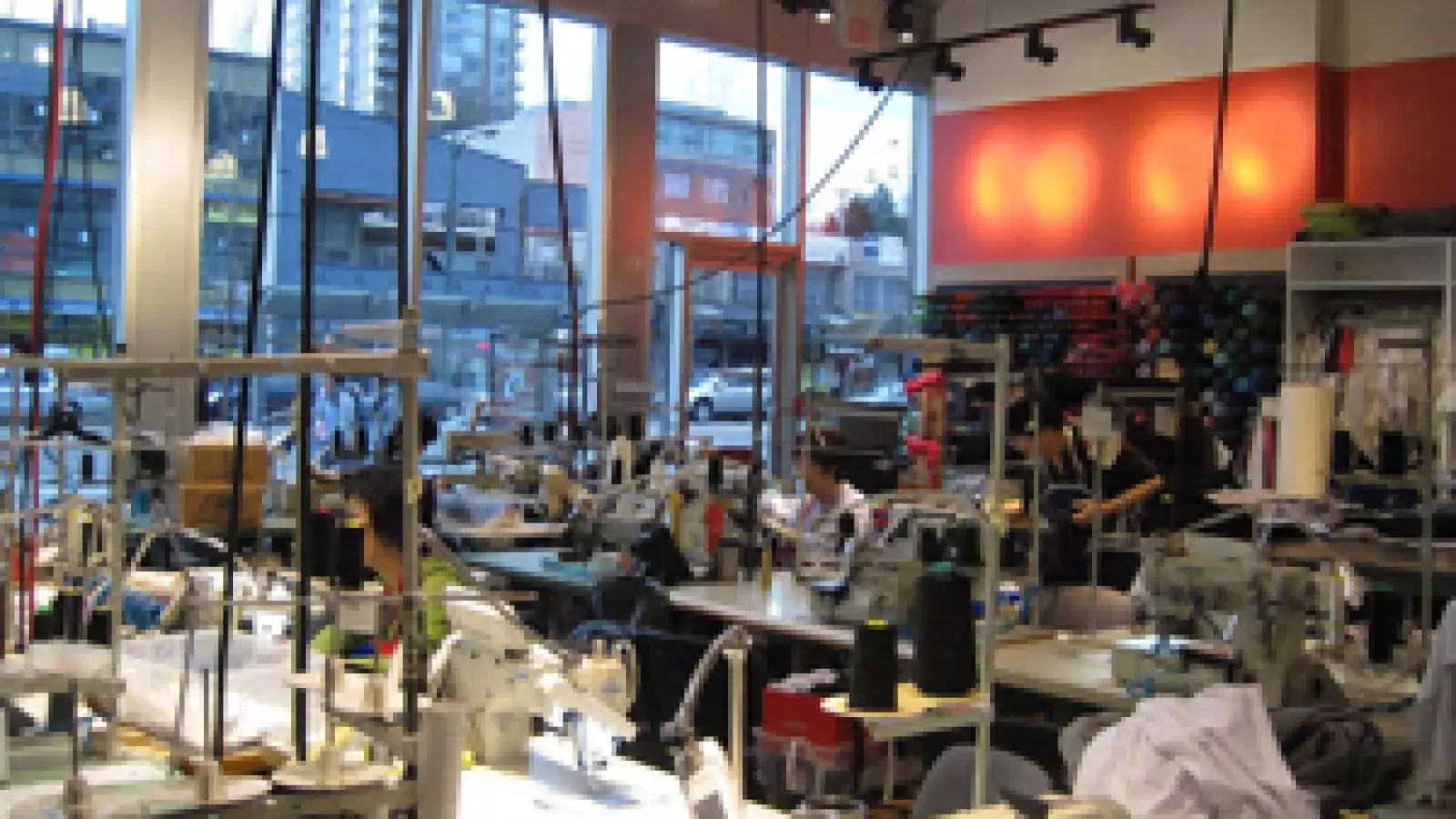Since our incorporation in 1886, Vancouver has transformed dramatically from its industrial roots to one of the world’s most livable cities. With our natural boundaries of the ocean, river and mountains, land constraints have led us to build upwards versus outwards. In the 1980s, Vancouver’s Central Area Planning department developed the ‘Living First’ strategy, which emphasized housing density and diversity to proactively plan for our changing economic climate, increasing immigration and dramatic growth. Within the plan, several commercial and industrial lands were rezoned to accommodate more housing. In fact, in the past 40 years, approximately 700 acres have been converted to other uses, predominantly residential. With land use changing and land prices increasing, several industrial businesses relocated to the suburbs where land was more affordable and space was ample. Today key communities such as South East False Creek, North False Creek, Coal Harbour and Citygate, provide housing solutions for those looking to live close to the downtown core, while new developments like River District, will further support our demand for housing.
In order to create a vibrant and healthy city, it’s critical to support a variety of economic activities with a diversity of land uses – from residential to commercial, recreational to industrial. With our land constraints, there’s ample competition over space for homes, businesses, public amenities and other uses.
While our focus in the past has been on increased density and housing, we can’t turn our backs to other land uses such as industrial. Today approximately 6% of our land is dedicated to industrial where several Production, Distribution or Repair (PDR) companies are based. The Industrial Lands Policies adopted in 1995 indicates 6 key areas: Burrard Waterfront, False Creek Flats, Powell/Clark, Mount Pleasant, Grandview/Boundary and Marine/Fraser. These PDR companies all share a need for relatively flexible building space, affordable rents and in several cases, a separation from housing. Accounting for close to 30,000 jobs, these businesses are critical to our overall economy and are a fundamental part of what makes Vancouver work.
To address this increasingly relevant matter, our municipality’s are now getting more creative and incorporating PDR businesses with residential, retail and office and is a trend we are likely to see more of. Take for example PCI Group’s Crossroads at Broadway and Cambie which includes 80,000 square feet of space for the Lululemon Lab – a hybrid retail/design space where new designs are sketched, sampled and sold in-house. Another example is Cressey Development Group’s Meccanica located at First and Quebec. For the past 30 years, this site has been home to Intermeccanica, a family-owned builder of replica speedsters and roadsters. For months, Cressey has worked with the City of Vancouver and the owners of Intermeccanica to find a solution that works for the business and future residents, and aligns with the City’s desire to maintain the area’s industrial heritage. The potential plan is for Intermeccanica to stay in the neighbourhood by creating a new street-level showroom within the residential tower. This is a win-win solution as it allows the custom automotive company to continue its legacy, and new neighbours will enjoy the presence of an artistic business whose hand-built cars are valued on a global scale.
While PDR businesses don’t receive the same accolades and recognition as our striking downtown offices, they need to be given special attention and protection for their future as they are an important element of our economic sustainability. With the support of the City and developers, we can continue to satisfy a variety of land uses and needs while supporting our growth and economic diversity.
Cameron McNeill



